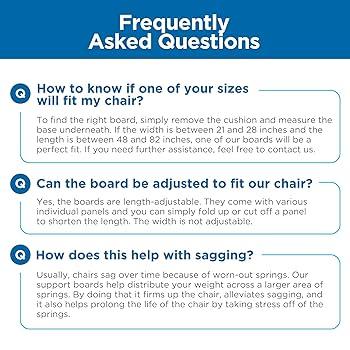West Africa Mixed Migration Report: Q1 2025 Overview
As global migration patterns continue to evolve, West Africa stands at a pivotal crossroads during the first quarter of 2025. Recent insights from ReliefWeb reveal the intricate factors influencing mixed migration flows across this diverse region. Socio-economic hardships, political unrest, and environmental transformations collectively propel human mobility from the Atlantic coast deep into the Sahelian belt. This report delves into demographic changes, shifting migratory corridors, and ongoing humanitarian demands that characterize this fluid situation. With growing numbers of individuals and families undertaking hazardous journeys in pursuit of security and improved livelihoods, these findings provide critical guidance for policymakers, aid agencies, and international stakeholders alike. The analysis not only highlights pressing challenges but also calls for unified strategies to tackle the root causes driving migration in West Africa.
Migration Dynamics and Emerging Trends in West Africa: Early 2025
The opening months of 2025 have brought notable transformations in migration behaviors throughout West Africa, shaped by intertwined socio-political and economic forces. Increasingly, migrants are choosing alternative routes beyond traditional pathways due to a mix of economic pressures, humanitarian emergencies, and environmental stressors. Conflict-induced displacement remains acute in hotspots such as Burkina Faso and Mali where insecurity continues to uproot communities on a large scale. Conversely, countries like Ghana and Senegal are witnessing an influx of internal migrants attracted by expanding urban economies-particularly within informal sectors-driven by rapid urbanization.
Environmental degradation plays a significant role as well; severe droughts coupled with advancing desertification across the Sahel zone have devastated agricultural livelihoods dependent on farming and pastoralism. Competition over scarce natural resources is intensifying tensions between local groups. A discernible shift toward metropolitan areas is underway as displaced populations seek refuge amid socio-political instability-cities including Lagos (Nigeria), Accra (Ghana), and Abidjan (Côte d’Ivoire) are experiencing population surges that reflect both opportunity-seeking behavior and complex urban challenges.
| Main Drivers of Migration | Key Indicators Observed Q1 2025 | ||||||||||||||||
|---|---|---|---|---|---|---|---|---|---|---|---|---|---|---|---|---|---|
| Armed Conflict & Insecurity | Sustained rise in internally displaced persons (IDPs) within Mali & Burkina Faso regions. | ||||||||||||||||
| Economic Motivations | Growth in rural-to-urban movement targeting Ghanaian & Senegalese cities. | ||||||||||||||||
| Climate Stressors | Drought severity escalating resource scarcity across Sahelian zones. | ||||||||||||||||
| Increasing demographic pressure on major urban centers.< / td > < / tr > < / tbody > < / table > Addressing Humanitarian Needs Amid Rising Displacement PressuresThe surge in displacement triggered by conflict escalation combined with climate shocks has placed immense strain on humanitarian systems throughout West Africa during early 2025. Reports estimate approximately4 million new displacements occurred within this quarter alone.This dramatic increase exacerbates existing gaps related to shelter provision, food security, water access, healthcare delivery-and protection services for vulnerable groups such as women children. Critical humanitarian concerns include:
In response to these mounting challenges , aid organizations increasingly emphasize innovative solutions designed for greater impact . Collaborative frameworks involving governments , NGOs , community leaders aim at streamlining assistance delivery while reinforcing local resilience capacities . Notable initiatives gaining traction include multi-sector programs integrating health care , protection measures , livelihood support -all tailored toward holistic recovery .
MULTI-SECTORAL HEALTH SERVICES INCLUDING PSYCHOSOCIAL SUPPORT TO ADDRESS TRAUMA AMONG MIGRANTS AND IDPS. | TARGETING COMPREHENSIVE CARE INCLUDING MENTAL HEALTH INTERVENTIONS. | PROMOTING SAFETY THROUGH LOCAL PARTICIPATION IN PROTECTION MECHANISMS. | <\/table> Policy Guidance for Effective Migration Management Across West African StatesTo confront the multifaceted nature of migration issues confronting West Africa today requires policy makers alongside NGOs adopt comprehensive strategies addressing both immediate relief needs as well as long-term structural drivers behind population movements. Strengthening economic prospects at origin points through targeted vocational training schemes coupled with microcredit facilities can reduce push factors compelling risky departures. On-the-ground interventions must guarantee equitable access to fundamental services including education healthcare housing not only benefiting migrants but also host communities thereby fostering social integration. Given escalating climate-related disruptions impacting livelihoods especially agriculture-dependent populations it is crucial that adaptation measures be embedded within national migration policies promoting resilience-building initiatives aimed at reducing forced displacement linked directly or indirectly to environmental degradation. Concluding Perspectives on West Africa’s Migration Outlook: Q1 2025 InsightsReflecting upon mixed migration developments during early 2025 reveals persistent complexities underscored by overlapping crises spanning conflict escalation environmental decline socioeconomic fragility. Moving forward continuous surveillance paired with flexible policy adjustments will be vital components ensuring effective protection mechanisms remain adaptive amid changing realities. For ongoing updates regarding mixed migration dynamics please follow ReliefWeb’s dedicated coverage platform where informed engagement helps amplify voices often marginalized ensuring dignity safety remain central priorities amidst uncertainty worldwide. | ||||||||||||||

